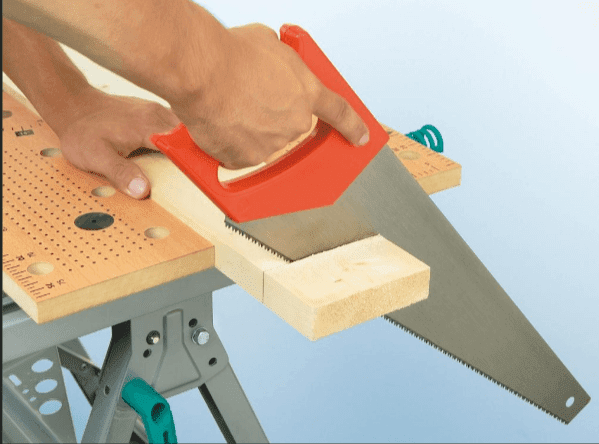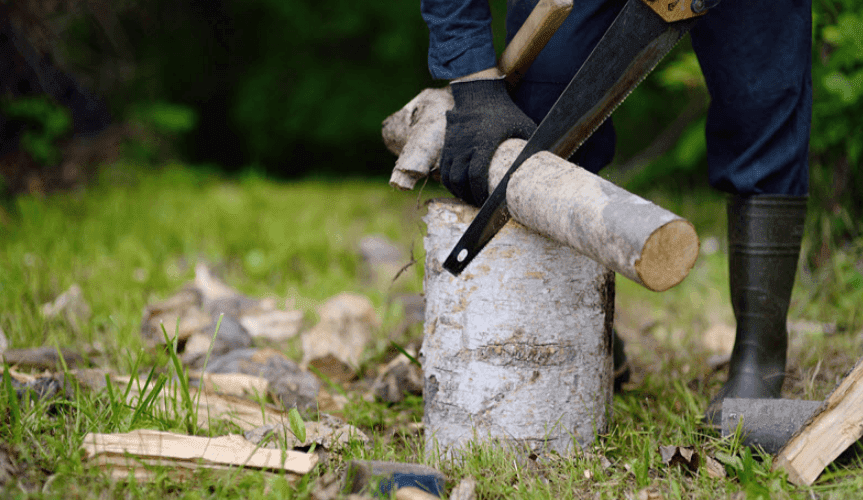The cross-cut saws and axes played a role in the past when chainsaws were not around. Saws at that time were longer, and two people had to cooperate to accomplish trunk cutting tasks. Moreover, cutting through trunks took a significant amount of time to accomplish.
However, experts invented a much smaller type of saw that a single man would operate as time went by. Hand saws have gained popularity for over centuries now. These handy tools are also great for tree cutting and pruning activities in our yards. But do you have experience with how to cut logs by hand with a hand saw? Let’s instill some knowledge according to woodtoolspro , how to go about such activity.
Cutting through logs wasn’t ever a simple task from the past days. The tools employed for these projects were inferior, and they took time to accomplish work. However, when we ushered in the hand saws, they have made work easy significantly. But are you knowledgeable about how to cut logs by hand with a hand saw?
Most people know Hand Saw For Cutting Firewood. However, not all understand how to use them to cut logs. Hand saws are commonly found in carpentry work stations. Carpenters use them to make accurate and consistent cuts through woods and logs. Most people prefer power saws; however, they aren’t important to certain cutting projects. Hand saws stand the greatest alternatives wherever power saws may not show of importance.
We have different hand saws in the market meant for cutting wood and wood in our yards. These saws differ in blade size, the number of teeth, and also their shape. Consequently, the teeth sizes of these hand saws differ, and placement of teeth per inch. For instance, you find an 8-point saw with seven teeth placed per inch. The number of teeth of a hand saw determines the time you take to accomplish a project. With fewer teeth, the work can turn rough and, at the same time, finish faster. On the other hand, many teeth provide smooth operation, but you accomplish the work slower.
Now, what about the thickness to cuts you will make. The cut thickness gets determined by the degree to which teeth are set. Moreover, how much they are bent outward also determines a lot the thickness of the cut. The teeth of saws probably get designed so that they make thicker cuts than the blades. A wider set provides a rough cut and fast project completion.
Cutting Using a Crosscut Saw
As we said early, there are different types of handsaws. They all perform a similar purpose of cutting through wood and logs. Among the best multi-purpose saws in the market are the crosscuts. In general, hand saws have comfortable handles. When you plan to start your project, you need to ensure the saw is straight on the wood or log.
Then, ensure that the tip bounces back towards the central position of the wood or log. By doing so, you will prevent binding in the kerf. Nevertheless, flexing the tip allows the narrowest sets of teeth.
This is not something different from the premium saws. These saws are also skew-backed mainly to minimize weight as well as improve balance. However, this is an impractical thing if you intend to use a saw for heavy-duty tasks. Most people consider high-quality steel since they flex better. These options also stay sharpest longer than other grades of blades.
After a time of use, the teeth will turn dull. For such a situation, cutting might turn tedious and, at the same time, slower. Ensure you file, reset and also level them. This is either done by a professional sharpener or even yourself.
Starting the Cutting Process
Start your project by holding the saw upright and place it on your wood or log. Then, you will draw the saw blade several times up. Several and slower drawing of the blade will make a notch cut on your log. Don’t rush making the first cut; use your thumb knuckle to provide the blade guidance. At the same time, ensure you allow the width of your hand saw.

Cut Smoothly
Once cutting takes way, ensure you lower the saw’s angle to between 30 to 45 degrees. Then, start making smooth and complete strokes. Align the saw by sighting down from overhead the back of the saw. Throughout the cutting process, ensure your shoulder and forearm maintains lined levels with the blade.
Just like in other projects, there are some problems you will encounter while doing the work. When using a hand saw, except the blade to veer from where you need it cut. Make a slight twist of the handle towards the opposite direction, the saw will come to its original line.
Continue with the complete stroke until you are almost done with cutting. When you note that you are almost completing, don’t wait until the log falls. Reach the waste piece and provide its support as you complete the cutting process. At the end of the cutting period, ensure you lower the energy you apply on the log. This is because continuing with the normal stroke might splinter the wood or log.
Conclusion
Hand saws are handy tools even in this technological era. They make the best alternatives whenever power saws are not of importance. These tools help us to cut logs in our gardens. I believe you have gained knowledge of how to cut logs by hand with a hand saw. Ensure you set the saw in the correct angle and handle as required to make excellent cuts. Hand saws are must-have tools in yards that help us to cut through woods and logs.




